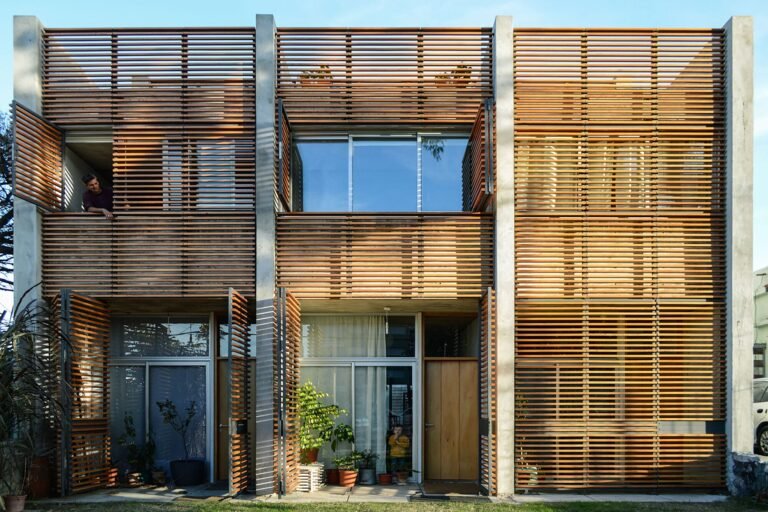Queer Spaces makes room for the term’s inherent expansiveness
When light hits the cover of Queer Spaces: An Atlas of LGBTQIA+ Places and Stories, a new book edited by artist and designer Adam Nathaniel Furman and architectural historian Joshua Mardell, the iridescent, slanted type shines into focus at its center and dissolves at its edges. The effect establishes the volume’s whole vibe, which lands somewhere between misty ether and disco ball—mutable, joyous, ineffable, fleeting. These same words also describe the essays within. Divided into domestic, communal, and public sections, they together paint a picture of queer lives through time and space by carefully describing and documenting the environments where those lives were carried out.
The project is, in concept alone, ambitious. In the book’s introduction, Furman and Mardell acknowledge the enormity of the task of cataloguing queer spaces, stating that they “have been created, and continue to be created, in a spectrum of different forms, shaped by and catering for a range of different queer communities and individuals in countries and cultures across the world and throughout time.” As a quality, queerness, understood broadly to encompass qualities outside of normative heterosexuality and cisgender identification, resists neat categorization. It is itself a destabilizing force. Queerness chafes against the status quo, against what is readily accepted by individuals and codified by society. As a term, “queer” is capacious, able to expand to make room for whomever might desire or even need to take it on as an identity.

What makes a space queer? And who gets to decide that it is so? Furman and Mardell suggest a queer space might be one where “you can express yourself without fear or shame” or “where you can act freely in a manner that is truly consonant with your inner self.” Expanding on these definitions, each of the authors in Queer Spaces asks the questions anew, implying that there might be as many answers as there are spaces that prompt the inquiry. Essays are sometimes accompanied by architectural images and drawings but more often by amateur photographs of people or historical material which evidences the life of a building beyond its walls.
The variety of the visual material is honest in its piecemeal nature; it also hints at the mutating or temporary quality in many of the book’s spaces. Take, for example, the train car where contributor Ailo Ribas puts in breasts and applies make-up. The space’s queerness is ephemeral, only perceptible it is inhabited by a queering force. In other cases, queerness is codified, like in an 18th-century house, beautifully described by Freya Gowrley, whose deed ensured it can only be inherited by single women who agree to maintain its beach-detritus decorations. In other cases, queer mutates from adjective to verb: The book’s final entry covers Comparsa Drag, an Argentine movable drag collective that queers any space it occupies.

Still other spaces elevate queerness from quotidian practice to a cause for celebration. As queer life has become more visible within mainstream culture and even commodified under capitalism, spaces that commemorate struggles for liberation—and, at times, the following victories—have emerged across the world. Queer Spaces showcases these places, too: Entries study, among other examples, a trans memory archive in Buenos Aires, a queer museum in Bogotá, and an institute for homophile studies in California. These sites preserve the institutional and collective memories of people whose struggles have been erased from official records and whose lives have been cast to the margins. They exist alongside the underground bars, cruising spots, and incidental hubs which supported queer people before they became more visible and more widely accepted. In doing so, the book paints a picture of queer life which makes room for its inherent expansiveness.

Queer Spaces is celebratory, even as it acknowledges that there are still places in today’s world where queerness must remain hidden—or take on a normative veneer—in order to exist. Sagitario, a hybrid queer club, gay sauna, and hotel in Lima, hides its activities behind a rectilinear modernist facade, a style widely respected throughout Latin America, writes Alexander Auris in the last essay of the book’s communal section. Sagitario’s inclusion in the collection offers a sobering reminder of how queer activists in many countries and cultures are still fighting to secure the right to live in the open, making these spaces not only fleeting but also fragile. Their visibility might make them vulnerable to attacks by bigots; examples of such tragedies are too many to count. Under more hostile conditions, their mere existence might become a threat to the lives of the people who most need them.
In the book’s first essay, Ribas writes that “queer space is simply that which allows us to be in the right relationship with change.” The space opened and held by Queer Spaces itself seems to be an example of this definition. As its essays lay bare the tensions inherent in queer existence—between the ephemerality of a marginalized identity and the persistent permanence of queer communities through time, between the safety found in invisibility and the necessity of staking out a space to feel like oneself—they also make space for readers’ own experiences, memories, and hopes. They make space for the idea of change. As a result, Queer Spaces is less of an atlas and more of a survey. Its offerings show us a taste of queer space as it has been and is today so that we might make the queer space that will be.
Marianela D’Aprile is a writer living in Brooklyn. She sits on the board of The Architecture Lobby and is a member of the Democratic Socialists of America.

